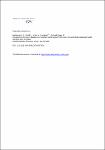Prevalence of known diabetes in German adults aged 25-69 years: Results from national health surveys over 15 years
Heidemann, Christin
Kroll, Lars Eric
Icks, Andrea
Lampert, Thomas
Scheidt-Nave, Christa
Aims:The few studies examining the secular trend in diabetes prevalence in Germany have yielded conflicting results. Therefore, using nationally representative samples of adults, we investigated whether the prevalence of known diabetes has changed over 15 years. Methods: Study participants were 25- to 69-year-old residents participating in nationally representative health surveys performed in the following time periods: 1990–1992, 1997–1999, 2002–2003, 2003–2004 and 2004–2005. Prevalences of diabetes, standardized to the population structure of 2004, and trends over time were assessed for the total study population as well as by gender and other diabetes-associated factors. Results: Between 1990–1992 and 2002–2005, no statistically significant trend in the total (5.16 and 5.34%,Ptrend = 0.68)or sex-specific diabetes prevalence (men: 5.43 and 5.73, P trend = 0.62; women: 4.88 and 4.95%, P trend = 0.94) was observed. For each time period, prevalence rose substantiallywith increasing age, increasing body mass index, lower sporting activity and lower education. Conclusions: Our findings reflect no temporal increase in the total prevalence of known diabetes in German adult men and women. However, prevalence estimateswere relatively highwhen comparedwith other European studies and call for continued efforts for the prevention and management of diabetes.
No license information

